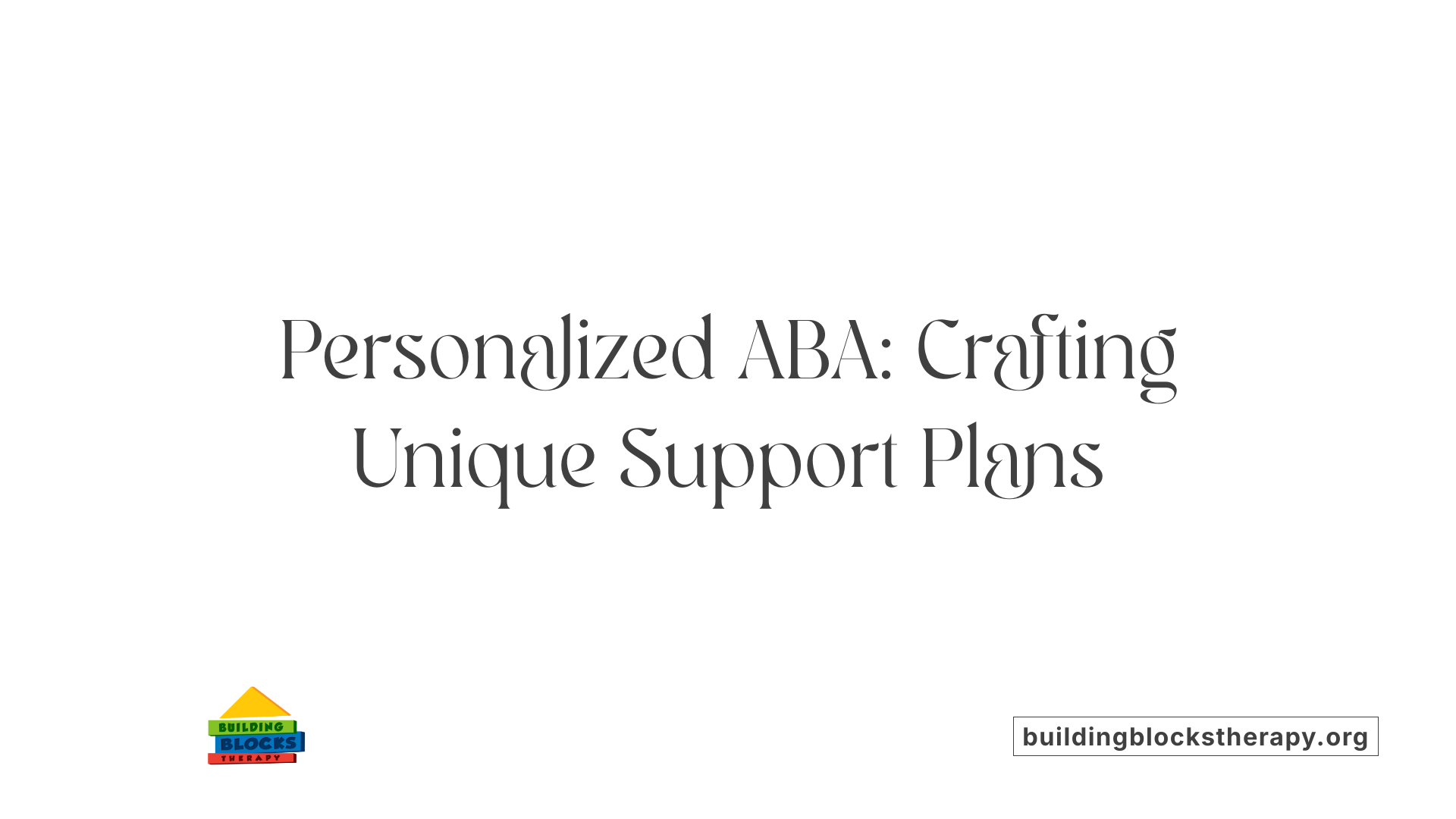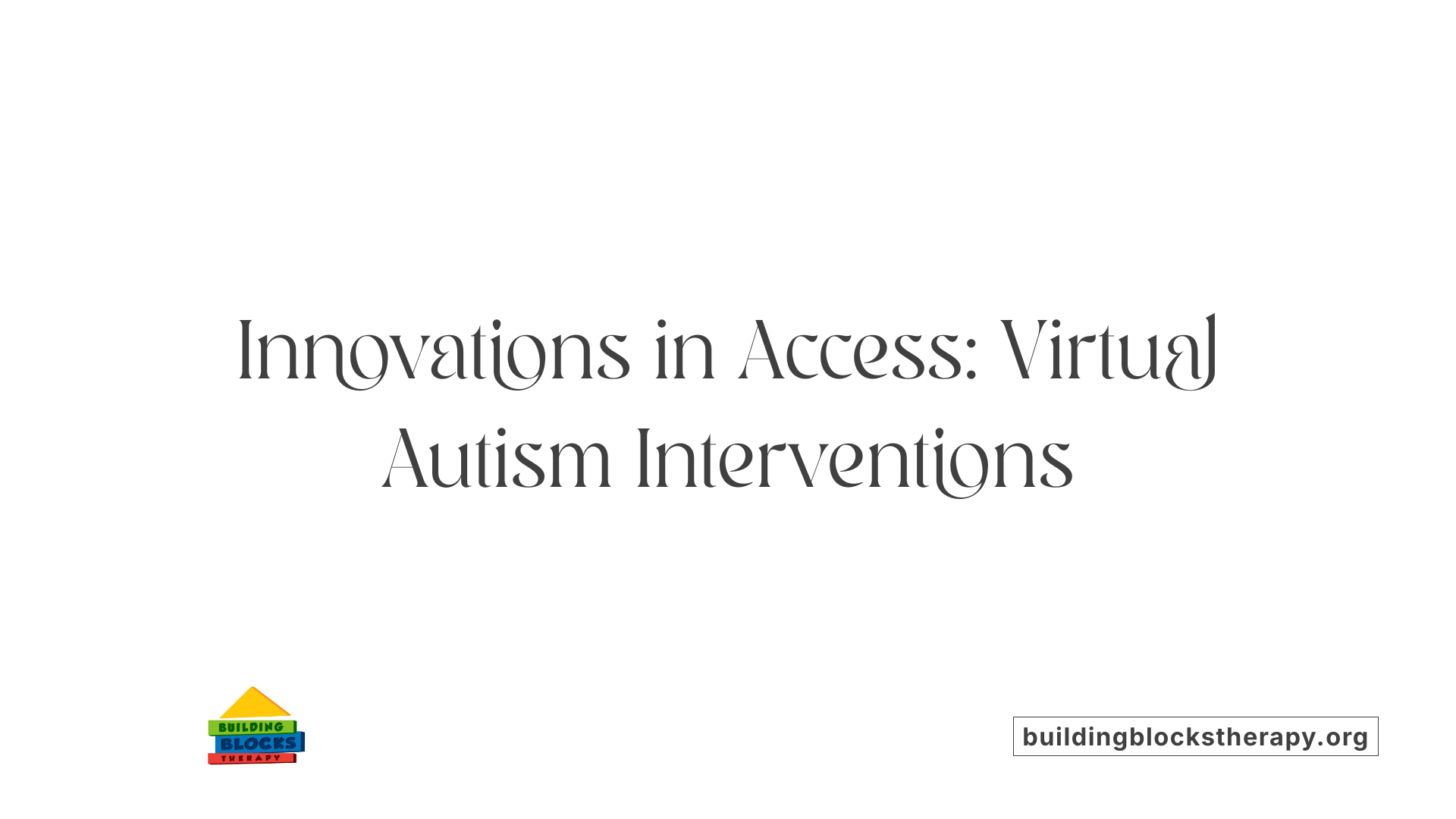Virtual Autism Symptoms
Expanding Reach and Impact: Virtual Interventions for Autism Spectrum Disorder

Understanding Virtual Autism Symptom Management
As autism spectrum disorder (ASD) continues to affect millions worldwide, innovative therapeutic approaches are emerging, particularly in virtual formats. This article explores how virtual programs and evidence-based behavioral therapies such as Applied Behavior Analysis (ABA) are transforming the management of autism symptoms. Emphasizing accessibility and efficacy, these approaches offer hope for children and families navigating ASD challenges through tailored and remotely delivered interventions.
What is Applied Behavior Analysis (ABA) Therapy and Its Role in Autism Treatment?

What is Applied Behavior Analysis (ABA) therapy and how is it used in autism treatment?
Applied Behavior Analysis (ABA) therapy is a science-driven intervention designed to support individuals with autism spectrum disorder (ASD) and other developmental challenges. Primarily, it uses behavioral principles, such as positive reinforcement, to encourage beneficial skills and reduce behaviors that interfere with learning or social participation. The therapy is highly individualized, focusing on increasing communication, social skills, and functional behaviors tailored to each child's unique needs.
Techniques used in ABA
ABA employs several specialized techniques:
- Discrete Trial Training (DTT): Teaching skills in small, structured steps with clear prompts and rewards.
- Pivotal Response Treatment (PRT): A play-based approach that builds motivation and communication initiation by following the child's interests.
- Early Start Denver Model (ESDM): Integrates play-based methods with ABA to promote social, emotional, cognitive, and language skills, especially effective for very young children.
These methods often require supervision by a Board Certified Behavior Analyst (BCBA), who assesses the child and creates a tailored plan. Parental involvement is also emphasized to continue techniques at home.
Evidence supporting ABA effectiveness
Research shows that ABA, especially when delivered intensively (typically over 15-20 hours per week) and started early in life, can lead to significant developmental gains. Benefits include improved language, social interactions, reduced disruptive behaviors, and a decreased need for special services later in childhood. Multiple studies affirm ABA's positive impact on functional skills and quality of life for many children with autism.
Respecting neurodiversity in modern ABA
While some critiques highlight concerns over the intensity and conformity focus of early ABA practices, current approaches prioritize respecting neurodiversity. Modern ABA aims not to normalize children but to enhance their ability to engage meaningfully with their community. The therapy focuses on developing skills that matter to the individual's quality of life rather than imposing rigid behavior standards.
Who Provides ABA Therapy and How Are Services Delivered?

Professionals Involved in ABA Therapy
ABA therapy is delivered by a team of trained specialists dedicated to supporting children with autism. Central to this team are Board Certified Behavior Analysts (BCBAs), who assess the child's individual needs and design personalized treatment plans. These plans incorporate evidence-based strategies such as positive reinforcement and structured learning.
Roles of BCBAs and RBTs
BCBAs supervise the therapy process and ensure treatments align with the child's progress and goals. To deliver daily therapy, Registered Behavior Technicians (RBTs) typically work directly with the child under BCBA guidance. RBTs implement specific programs developed by BCBAs, providing hands-on support in various settings.
Settings of Therapy Delivery
ABA therapy can take place in multiple environments to suit the child's needs and daily life. Common settings include the child's home, school, or community programs. This flexibility helps generalize skills learned during therapy to real-world situations, promoting independence.
Supervision and Program Development
BCBAs play an ongoing role in monitoring progress and adapting interventions as required. They ensure therapy is effective and grounded in applied behavior analysis principles, supporting both skill acquisition and behavior reduction. The collaborative approach between professionals and families is vital for sustained success in ABA therapy.
Individualizing ABA Therapy: Tailoring Interventions to Each Child

How is ABA therapy customized for each individual?
Applied Behavior Analysis (ABA) therapy is meticulously tailored to the unique needs of each child through comprehensive assessment processes. Therapists begin by conducting detailed interviews, observations, and standardized testing to understand the child's specific strengths, challenges, and developmental profile.
Based on these insights, a personalized intervention plan is developed. These plans include SMART goals—goals that are specific, measurable, attainable, relevant, and time-bound—to target areas such as language, social skills, and behavior.
Customization also involves integrating the child's personal interests and preferred reinforcements. For example, if a child enjoys a certain activity, therapists use that as motivation by linking it to rewards or positive feedback, which maintains engagement and encourages learning.
Learning styles are another adaptation point; whether a child learns best visually, auditorily, or kinesthetically, ABA techniques are modified accordingly to make skill acquisition more effective. This ensures the child not only participates but thrives during therapy sessions.
Ongoing progress monitoring is a critical element. Therapists collect data continuously to track improvements and challenges, allowing for adjustments in techniques, pacing, and goals. This dynamic process ensures ABA therapy remains responsive and effective throughout the intervention period, adjusting to the child's evolving abilities and needs.
Measured Success: Evidence Supporting ABA Therapy for Autism

What evidence supports the effectiveness of ABA therapy in helping people with autism?
Applied Behavior Analysis (ABA) therapy stands on a robust foundation of scientific research and controlled trials demonstrating its effectiveness in aiding individuals with autism. Studies involving controlled groups have shown that ABA leads to marked improvements in social skills, communication, and daily living abilities. For example, a trial with 60 boys aged 4 to 11 revealed significant gains in these areas and reductions in anxiety after just six weeks of ABA therapy.
What developmental gains can early ABA interventions provide?
Early interventions using ABA are particularly powerful. Children who begin therapy before age 4, with more than 20 hours per week, often experience substantial developmental progress. These include improvements in intellectual functioning, language acquisition, and adaptive behaviors. Such early and intensive ABA reduces the future need for specialized services, providing long-term benefits.
Why is intensive therapy important in ABA?
The intensity of therapy is crucial in determining success. Research consistently shows that receiving at least 15 to 20 hours of structured ABA each week is associated with greater gains. This level of commitment allows for thorough skill-building and behavior modification, tailored to each child's unique needs.
How are evidence-based methods and supervision involved in ABA therapy?
ABA therapy employs evidence-based strategies like positive reinforcement, prompting, and functional communication training. The involvement of Board Certified Behavior Analysts (BCBAs) ensures individualized assessment and ongoing supervision, keeping treatments aligned with best practices. Techniques such as Discrete Trial Training (DTT), Pivotal Response Treatment (PRT), and the Early Start Denver Model (ESDM) are all grounded in research and monitored by experts.
| Aspect | Description | Impact on Therapy Outcomes |
|---|---|---|
| Controlled Trials | Empirical studies with measurable outcomes | Validated effectiveness in social and communication skills |
| Early Intensive Treatment | Over 20 hours/week before age 4 | Significant developmental and adaptive behavior gains |
| Individualized Plans | Tailored by BCBAs based on child assessment | Optimized skill acquisition and behavioral change |
| Evidence-based Techniques | Use of positive reinforcement, prompting, and DTT/PRT | Consistent, reliable improvements in key domains |
These factors collectively confirm ABA as a scientifically supported and effective therapy for autism, providing children with essential skills and behavioral improvements.
Virtual Delivery of Autism Interventions: Opportunities and Outcomes

Adaptation of therapies like Facing Your Fears (FYF) to virtual format
The Facing Your Fears (FYF) program, a 14-week group cognitive behavioral therapy intervention tailored for children with autism spectrum disorder (ASD), has been successfully adapted for virtual delivery. This adaptation allows children aged 8 to 13 years to participate remotely, maintaining the program's core strategies to reduce anxiety symptoms effectively.
High completion and attendance rates in virtual programs
In a recent delivery of the virtual FYF program to 100 autistic children over one year, retention was impressively high at 87%, with session attendance at 83%. These rates demonstrate strong engagement and feasibility of delivering structured autism therapies in a virtual environment.
Parental satisfaction and self-efficacy gains
Parental feedback further underscores the success of the virtual adaptation. Parents reported a mean satisfaction score of 7.60 out of 9, indicating a positive reception. Beyond satisfaction, parents experienced meaningful increases in their confidence to manage their child's anxiety. Both parent and child assessments revealed significant reductions in anxiety symptoms, highlighting the clinical effectiveness of the virtual program.
Impact of COVID-19 hardships on program effectiveness
Interestingly, despite challenges posed by the COVID-19 pandemic—including material deprivation and stress—these hardships did not hinder the program’s benefits. Some predictors, like positive outlook, had a small but significant impact on treatment outcomes, suggesting resilience and adaptability in program delivery under difficult circumstances.
Hub-and-spoke model increasing access across wide regions
The program adopted a hub-and-spoke model, where community providers received supervision from a specialized center. This structure efficiently expanded access to therapy services across large geographic areas, including remote regions, thus overcoming traditional barriers related to location and resource availability.
The combination of virtual delivery methods with structured supervision models and strong family involvement reflects a promising direction in autism intervention. These approaches ensure greater reach while maintaining high standards of care and measurable improvements in children's anxiety and overall well-being.
Comprehensive Autism Early Intervention: Beyond ABA
What role do multidisciplinary teams play in early intervention for autism?
Early intervention for autism spectrum disorder (ASD) typically involves a multidisciplinary team that collaborates to support the child’s development. These teams often include psychologists, speech and language therapists, occupational therapists, and physical therapists. This coordinated approach ensures that interventions address a broad range of developmental areas simultaneously, from communication to motor skills.
How do speech and language therapy contribute to early intervention?
Speech and language therapy is a critical component, aiming to improve the child's expressive and receptive communication skills. Therapists use specialized techniques tailored to each child's needs, encouraging language development and more effective interaction with others.
Why is motor skill development and socialization important in autism interventions?
Motor skills development supports the physical abilities necessary for daily activities and plays a significant role in socialization opportunities. Occupational and physical therapists engage children in exercises that enhance coordination and strength while also facilitating peer interaction through group activities, fostering social connections.
What are Naturalistic Developmental Behavioral Interventions (NDBIs), like the Early Start Denver Model?
NDBIs combine ABA principles with developmental and play-based approaches. The Early Start Denver Model (ESDM), designed for children aged 1 to 4 years, promotes social, emotional, cognitive, and language skills. Delivered through engaging play and everyday routines, ESDM incorporates therapists and family members, supporting skill development in a naturalistic context.
How do parent-mediated interventions and social skills instruction benefit children with autism?
Parent-mediated treatments, such as the JASPER program, empower caregivers to become effective therapists by training them in intervention strategies. This approach increases therapy intensity and generalizes skills to everyday environments. Additionally, social skills instruction, especially for school-aged children, enhances communication abilities, understanding of social cues, and peer interactions. It can be delivered one-on-one, in groups, or through computer-based training, tailored to the child's needs.
Together, this comprehensive approach extends beyond Applied Behavior Analysis (ABA), offering a rich blend of therapies that address communication, motor development, and social skills. Such integration helps create a supportive network that fosters growth and independence in children with autism from an early age.
Integrating ABA and Virtual Therapy: The Future of Autism Symptom Management
Combining evidence-based ABA with virtual platforms
The integration of Applied Behavior Analysis (ABA), a proven therapy for autism spectrum disorder (ASD), with virtual delivery methods is reshaping how interventions are accessed and implemented. Programs like the virtually delivered Facing Your Fears (FYF), a 14-week group cognitive-behavioral therapy adapted for autistic children, demonstrate the feasibility and success of remote therapies, achieving an 87% retention rate and high parent satisfaction. Such virtual adaptations ensure that effective methods like discrete trial training, pivotal response treatment, and the Early Start Denver Model (ESDM) reach broader populations.
Training parents and caregivers for home-based therapy
A critical component of effective autism therapy involves empowering parents and caregivers. ABA-based treatments often include professional guidance to train families in therapeutic principles, enabling continuity of care at home. Parent-mediated approaches such as JASPER facilitate parent involvement, enhancing education on managing child anxiety and behavioral challenges. This not only boosts parent self-efficacy but also maintains treatment consistency in natural environments.
Emphasis on individualized, culturally sensitive approaches
Therapeutic programs acknowledge the unique needs of each child by tailoring intervention plans based on baseline anxiety, autism severity, and adaptive functioning. Cultural sensitivity and recognizing family contexts, including stressors such as material deprivation or positive outlook, ensure treatments are relevant and effective. The goal is to target socially significant behaviors with strategies respectful of individual differences rather than enforcing conformity.
Increasing accessibility to remote and underserved communities
Virtual modalities and the hub-and-spoke supervision model expand access to specialized care across wide geographical areas, including remote regions where in-person services are limited. This framework connects community providers with expert centers, enhancing service delivery and equity in healthcare. Early intervention teams, comprising psychologists and therapists, can thus reach more families promptly.
Potential of technology to enhance ongoing monitoring and motivation
Technology facilitates continuous progress tracking through virtual sessions, enabling real-time adjustments to therapy plans. Additionally, interactive platforms motivate children by integrating play-based ABA approaches that align with their interests. Digital tools support caregivers in reinforcing skills and managing behaviors effectively at home, promising sustained developmental gains with engaging, evidence-based interventions.
Advancing Autism Therapy Through Virtual Means
Virtual autism symptom management represents a promising frontier in expanding access and efficacious treatment for children with autism spectrum disorder. Programs like the virtual adaptation of the Facing Your Fears intervention demonstrate that group cognitive-behavioral therapy can be effectively delivered online, fostering parent empowerment and reducing anxiety symptoms in autistic children. Meanwhile, Applied Behavior Analysis remains a cornerstone of autism intervention, offering personalized, evidence-based strategies grounded in behavioral science. The integration of ABA with virtual delivery models, supported by multidisciplinary teams and parent involvement, holds tremendous potential to overcome geographical and logistical barriers. As technology progresses and research continues to validate best practices, these virtual approaches offer a hopeful pathway toward enhancing quality of life and functional independence for individuals with autism and their families.
References
- Virtual delivery of group-based cognitive behavioral ...
- Behavioral Therapy for Autism Spectrum Disorder in Children
- Applied Behavior Analysis (ABA)
- Intervention Approaches Used for Children With Autism ...
- Making ABA Work: Customizing Therapy Goals for Better ...
- Hopkinsville, KY
- Applied Behavior Analysis (ABA)
- ABA Therapy Goals: 25 Practical Examples & Timelines




